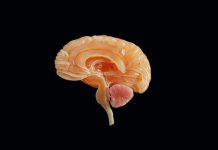
As our population ages, an increasing number of people over 65 are diagnosed with neurological disorders such as Alzheimer’s and Parkinson’s diseases. Currently, about one in ten older adults face such challenges, yet effective treatments are still limited. T
o address this, researchers are turning their attention to potential solutions that might come from an unexpected source: cannabinoids, the natural compounds found in the cannabis plant.
Among these compounds, THC (tetrahydrocannabinol) and CBD (cannabidiol) are the most well-known. However, a third cannabinoid, CBN (cannabinol), is now gaining interest for its potential in neuroprotection.
Unlike THC, CBN is less known and produces milder, less psychoactive effects, which could make it more suitable for clinical applications.
Researchers at the Salk Institute have recently made significant advances in understanding how CBN can protect the brain from aging and neurodegeneration.
Their latest study, published in Redox Biology, explores how this compound and its newly developed derivatives can be used to treat and possibly prevent neurological conditions such as traumatic brain injury, Alzheimer’s, and Parkinson’s disease.
The study’s findings are promising. The team, led by Research Professor Pamela Maher, synthesized four new compounds inspired by CBN that showed enhanced neuroprotective properties.
In experiments with Drosophila fruit flies, one of these derivatives, named CP1, was particularly effective in treating injuries similar to traumatic brain injuries, suggesting a potential role for CBN in clinical settings.
The effectiveness of CBN and its derivatives seems to stem from their ability to prevent the dysfunction of mitochondria, the powerhouses within cells. When mitochondria malfunction, it can lead to the death of neurons—brain cells—and contribute to the development of neurological disorders.
The Salk team’s research indicates that CBN can protect neurons by modulating various aspects of mitochondrial function, preventing cell death processes known as oxytosis and ferroptosis.
To create these CBN derivatives, the researchers first dissected the CBN molecule to identify which fragments were most effective at neuroprotection. They then enhanced these segments to produce analogs with better medicinal properties.
These analogs were not only capable of protecting nerve cells from death but were also improved in terms of their ability to enter the brain, act quickly, and deliver a strong neuroprotective effect.
The next steps for the research team include further screening and refining these CBN derivatives.
They are also planning to expand their studies to explore how these compounds can be specifically tailored to combat age-related neurodegenerative changes and maintain cellular health in the aging brain.
This research represents a significant step forward in the quest to develop effective treatments for neurological disorders that affect the elderly.
By harnessing the potential of cannabinoids like CBN, scientists are opening new pathways for the creation of drugs that could one day prevent or mitigate conditions like Alzheimer’s and Parkinson’s, providing hope for millions of affected individuals and their families.
If you care about Alzheimer’s disease, please read studies that bad lifestyle habits can cause Alzheimer’s disease, and strawberries can be good defence against Alzheimer’s.
For more information about brain health, please see recent studies that oral cannabis extract may help reduce Alzheimer’s symptoms, and Vitamin E may help prevent Parkinson’s disease.
Copyright © 2024 Knowridge Science Report. All rights reserved.



